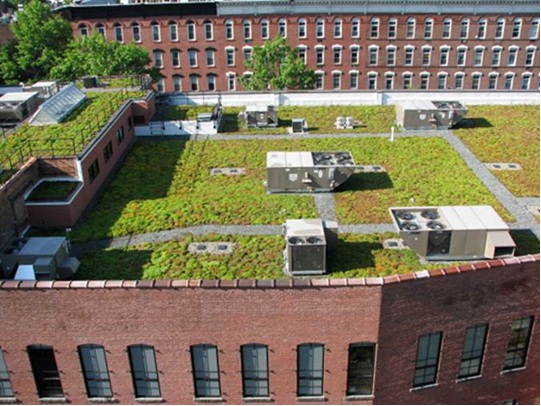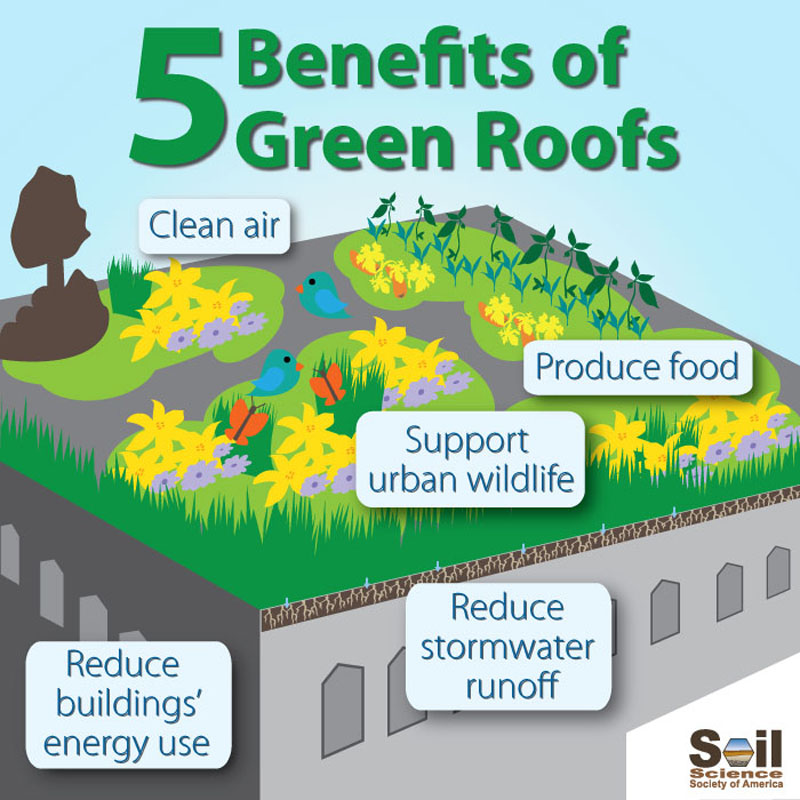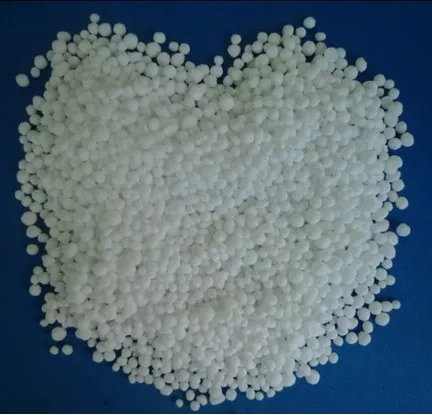Introduction to Green Roof Organic Fertilizer
Sustainable architecture for green roof organic fertilizers consists of natural materials that are fully biodegradable and do not leave toxic residues when rotting down. The core component of such fertilizers acts as a medium for the roof’s vegetation and those nutrient materials should be composted food scraps, animal manure and other organic wastes that have been treated to make them non-toxic.
Green roof organic fertilizer has great significance for urban sustainability. It helps us grow more plants in the city. We know that urban areas are much warmer than rural areas due to human activities. The phenomenon called urban heat island is a major issue for cities. It increases energy use, leads to higher emissions of pollutants and greenhouse gases, and affects water quality. Green roofs can mitigate the effect to certain extent with fertilizers.
Furthermore, green roofs have grown in popularity in cities over the past couple of years, as building owners and municipalities starting recognising the advantages of green roofs for the community at large. As Sarah L. Thompson, an urban planner and an environmental consultant at Strategic Alliance Group, put it: ‘Green roofs, especially with organic fertilizers, aren’t just a fashion, but an important step towards making our cities more livable, sustainable and beautiful.
After the paragraph sits the hook, which poses looking ahead for ‘the multiple benefits of green roof organics fertilizer and why is it so important for urban sustainability.’ As the intro is just the entrance, the success depends on the content of the hook, which is the centre, the mints: the more elaborate, the more you sell.
Benefits of Using Organic Fertilizer on Green Roofs
In the context, green roof organic fertilizers can promote sustainable development in urban areas and improve living conditions through their multi-environmental, economic and social benefits.
Environmental Benefits
One of the most important ecological benefits of green roof organic fertilizer is the mitigation or reduction of the urban heat island effect (UHI). Experimental studies demonstrate that increasing the biomass of roof vegetation results in decreased rooftop and air temperatures via evapotranspiration, albedo and shading effects, contributing to cooler urban environments. The improved plant growth enables improved air quality by enhancing the removal of pollutants, including carbon dioxide, an important mitigant of urban pollution. ‘When people think about organic fertilizers, they think about foodand rarely realise that it can be used on green roofs.
However, as important as it is for food production and reducing food miles, applying organic fertilizers on cities can significantly help to improve urban air quality and reduce cooling efforts,’ says Dr Emily Baird, associate research scientist for the Cornell University Center for Sustainable Global Enterprise and the Atkinson Centre for a Sustainable Future.
Economic Benefits
For the economy, in addition to extending the lifespan of the roof, the use of green roof organic top dressings reduces energy costs. The top dressing helps guard the roofing from both ultraviolet light and the extremes in temperature, which both shorten the life of roofs. At the same time, the mass of the living layers also reduces the amount of energy needed to heat and cool the building. According to an Iviva Osted Foreword from the Sustainable Cities Institute, ‘buildings with green roofs use 20 to 25 per cent less energy in peak summer months’.
Social Benefits
Socially, green roofs can enhance the environmental value of buildings, attracting people and promoting biodiversity. Having an element of green can increase amenity and recreational space, for the benefit of building residents and workers. Cultivated with organic fertilizer, green roofs not only enhance the aesthetics and the quality of buildings but can also offer community space for residents and workers, leading to greater quality of life and increase in house values. By attracting different species of birds, insects and other flora and fauna, green roofs can contribute to urban biodiversity.
‘As urban dwellers are often disconnected from nature, green roofs can help to satisfy nature deprivation, thereby promoting mental wellbeing and community cohesion,’ says Dr Karen Liu, a senior lecturer in urban sociology at University College London.
Green roof organic fertilizer represents a holistic concept of urban sustainability, offering ecological, economic and social advantages.

Types of Organic Fertilizers Suitable for Green Roofs
When it comes to nurturing green roof gardens, the key factor can be choosing a proper green roof organic fertilizer. There are various substrates based on different grades and kinds of organic matter available in the market, such as garden organic fertilizer, manure, bark mulch, soil, peat moss crops, rice hulls, and multifunctional floral soil. Garden organic fertilizer, manure, and peat moss crops are particularly beneficial materials for water retention for rooftop greening.
Organic fertilizer can greatly improve the production of various plants, especially for greening rooftops. To grow vegetables or flowers, people can find more substrate options.
Compost
Compost is the foundation for organic fertilization and is particularly important for green roofs: a nutrient-rich substance derived from decomposed organic materials such as food scraps, yard waste, and other organic materials that are destined to be consumed by organisms who convert them into more earthly forms. Not only is compost a chef’s dream, it also provides nutrients and encourages a healthy soil structure, which promotes both water retention and aeration, thereby supporting an entire universe of plant life – from the grasses to the flowers and everything in between. This makes for a flexible fertilizer for just about any green roof setup.
Worm Castings
Vermicompost (worm castings), another great organic fertilizer for green roofs, is created by earthworms from their digestion of organic material, and it boasts a high nutrient-content (and a fine, easily absorbable texture) comprised predominantly of nitrogen, phosphorus, and potassium, all embedded in a form that’s enriched with microbes important for uptake of nutrients and suppression of disease in plants.
Bone Meal
Bone meal acts rather slowly as a fertilizer but is a direct source of phosphorus. It is also a good source of calcium and a little nitrogen, which are not only essential for root and plant growth but also strongly stimulate the flowering of plants. Bone meal can be particularly necessary on green roofs to help roots grow robustly, which stabilizes the growing medium and supports the vegetation structure above.
Pros and Cons
Each type of organic fertilizer offers unique benefits but also comes with considerations:
- You get a balanced blend of nutrients with compost, but you have to make sure you source or produce it carefully, so it doesn’t carry weed seeds or pathogens.
- Worm castings are more nutrient-rich and better for the soil, but somewhat more expensive and harder to get.
- Bone meal is good for flowering and root growth but rodents might be attracted if not mixed well into the earth.
These natural possibilities reflect a larger turn toward sustainable urban building practices, not only feeding plants but also contributing to ecological equilibrium in urban settings, making green roofs more sustainable – and useful – in the city.
Best Practices for Applying Organic Fertilizer on Green Roofs
Appropriate use of organic fertilizer ensures its full benefits. To achieve green roof sustainability and healthy roof vegetation, it is important to follow best practices when applying organic fertilizer. Best practices not only help ensure that nutrients are efficiently taken up by roof vegetation but also avoid runoff from green roofs to the environment.
How to Properly Apply Organic Fertilizer
- Assess the Soil Composition: Assess the composition of the soil or growing medium on your rooftop before you add any organic fertilizer. Then decide what type and how much you need.
- Choose Your Organic Fertilizer: Pick the right kind of fertilizer—natural fertilizer, compost, worm castings, or bone meal—depending on your needs for nutrient content and the condition of your soil.
- Apply When It Will Do the Most Good: Organic fertilizers should be applied when the plants are actively growing, which is in early spring and sometimes late summer, depending on your climate.
- Apply the Right Amount: Applying too much fertilizer can damage plant growth and harm the environment by washing into local water supplies. Use the right amount as the package recommends or ask a soil expert.
- Even Distribution: Spread the fertilizer evenly over the green roof to allow all plants to get an equal share of nutrition and nitrogen, and to reduce the risk of overdosing any part of the roof.
- Water Wisely: Once the fertilizer is applied, water it in gently but completely then water your lawn as usual. This helps the fertilizer soak into the soil and reduces the chances of nutrient runoff.
Frequency and Timing of Fertilizer Application
- For Spring: Fertilize in spring with a balanced fertilizer to jumpstart spring growth.
- Summer Top-Dress: Following initial results and after slow-growing plants show signs of nutrient deficiency or poor health, a light midseason top-dressing is advised.
- Do Not Fertilize Late in the Growing Season: Do not fertilize late in the growing season to avoid producing new growth that could be killed by winter conditions.
Adopting these good practices means your green roof will continue to be productive and lush, and help play its role in the urban ecology, providing biodiversity and sustainability. With the right management, fertilizing with organic fertilizer can make urban spaces greener and more sustainable to reduce the footprint of buildings.

Challenges and Considerations in Using Organic Fertilizer on Green Roofs
Using organic fertilizer on green roofs brings particular issues, but these challenges need not compromise the long-term success and resilience of urban rooftop gardens.
Common Obstacles Faced by Urban Gardeners and Building Managers
- Loss of Nutrients: One major problem is nutrient leaching, which means that water will carry soluble nutrients away, thereby reducing the efficiency of the fertilizer use and damaging the local environment.
- Restricted Root Space: While this could be overcome by deeper soil depths, the thin root space on a green roof could limit the benefits provided by organic fertilizers that usually depend on a rich soil biota to degrade and slowly release nutrients.
- Weight Restrictions: Realize that applying a liberal amount of organic fertilizer will also add to the structural weight of your buildings. If watering your lawn gets cumbersome, consider just letting it be.
- Access: It is difficult to gain access to roof areas for routine fertilizer application in case of high-rises in an urban environment.
Solutions for Common Challenges
- Innovative Application Methods: Less intrusive application methods are possible, for example, via a drip irrigation system that includes a fertilizer injector so that workers have to simply turn the switch on.
- Fertilizer Formulation: Because of the special conditions of green roof sites, specially formulated organic fertilizers have been developed to improve the performance of the green roof. These formulations may be lighter in weight or have been developed because nutrients released from the fertilizer are incompatible with green roofs and need to be slowed down or released at the absorption rates of the chosen growth media.
- Monitor More Often: By setting up regular monitoring to test soil health, you can more precisely manage fertilizer types and amounts, so plants get what they need and not extra wasted nutrients.
These challenges can be met in novel and creative ways by urban gardeners and building managers alike, fulfilling the vision of organic fertilizer use on green roofs so as to enhance the provision of urban biodiversity and sustainability. Progress toward the overarching goal of greening up our cities will be paced by the success of individual efforts of this type.
Conclusion
When using green roof organic fertilizer, one is literally getting their hands dirty in a virtuous sense: gardeners have a role in improving the sustainability of their urban environments. Green roof fertilizers are a vital part of the shift toward the creation of healthier, more sustainable cities. Through these practical applications, the underused resource of the urban roof can become an important part of the ecological and social fabric of urban existence.
Including organic fertilizer in the approach promotes environmental benefits, but brings not only those, but other economic and social benefits as well. Economically, it cuts energy bills by keeping buildings cooler, and cuts waste and maintenance costs too, by minimising the replacement of materials on roofs. Socially, the green infrastructure aspect contributes to all the known benefits that green spaces provide. There is a wellbeing aspect, for example, in the greening of some of the more ‘hot and hard’ environments we all now live in. Socially, we respond positively to the thrivability provided by this small green environment on our roof, and this benefits us all.
And once more cities start recognising these benefits, more green roofs, with organic fertilizers, will be used. So, not only will cities support their urban ecosystems through these innovations, but also contribute to worldwide environmental endeavours, such as the reduction of urban heat islands and promotion of biodiversity. In this way, cities can sustain their goals of innovation and sustainability to grow greener in the present and future. The cities that will entice us to remain inside their walls will not only be beautiful but also help curb climate change. Making our urban spaces livable is now our path to survival.
Here are some references related to the use of organic fertilizers on green roofs:
- Intermountain Roofscapes: This source discusses the use of organic fertilizers on green roofs, emphasizing their benefits in improving soil structure, enhancing microbial activity, and promoting plant health. The article also explores various types of fertilizers, including slow-release and liquid options, and offers guidelines for choosing the right type of fertilizer based on plant needs and environmental considerations.
- HortScience Journal: This study examines the effects of different rates of controlled-release fertilizers on the growth of Sedum plants on green roofs. It provides valuable data on how varying fertilizer applications affect plant growth, leachate nutrient content, and overall vegetative coverage, which can guide the management of nutrient applications on green roofs to minimize environmental impact and maximize plant health.
- Archtoolbox: This article offers an overview of different types of green roof systems, including intensive, semi-intensive, and extensive, and discusses the considerations for each regarding structural load, maintenance, and the environmental benefits they offer, such as insulation properties and stormwater management.







